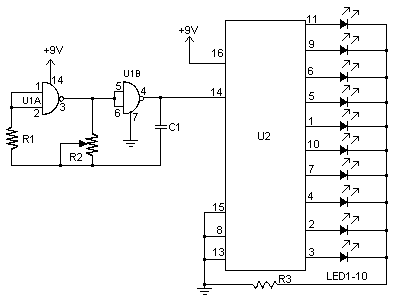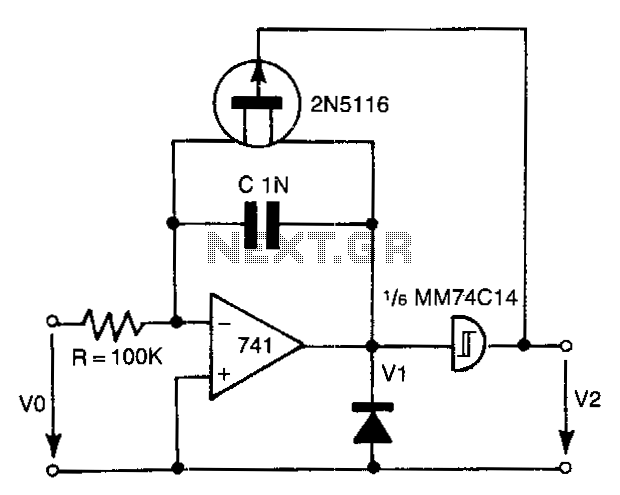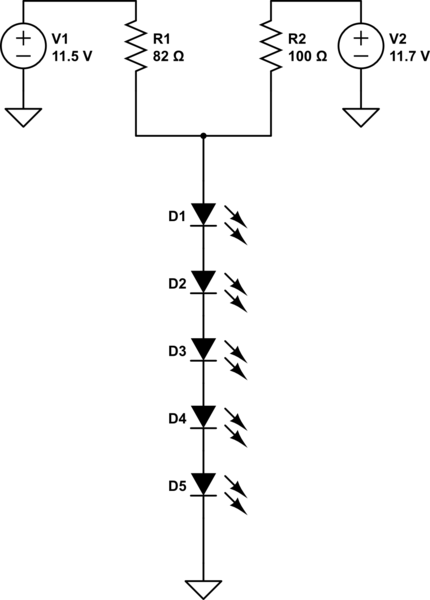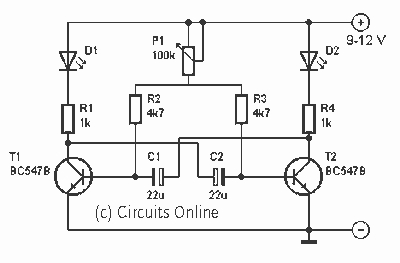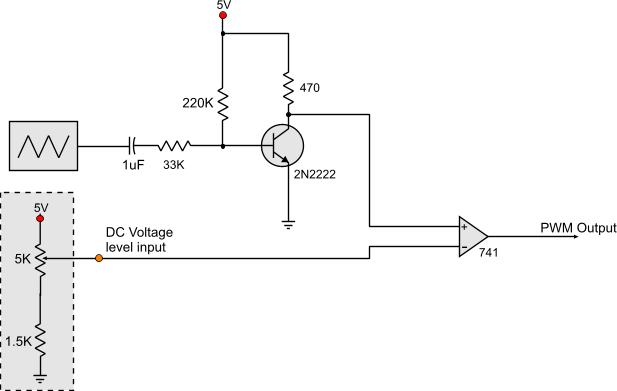
Dual White LED Step-Up Converter & Schottky
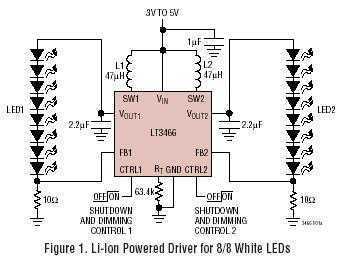
LT3466 is a dual full function step-up DC/DC converter specifically designed to drive up to 20 White LEDs (10 in series per converter) with a constant current. Series connection of the LEDs provides identical LED currents resulting in uniform brightness and eliminating the need for ballast resistors and expensive factory calibration. The LT3466 operating frequency can be set with an external resistor over a 200kHz to 2MHz range. A low 200mV feedback voltage minimizes power loss in the current setting resistor for better efficiency. Additional features include output voltage limiting when LEDs are disconnected and internal soft-start.
The LT3466 is a highly efficient step-up converter optimized for driving multiple white LEDs in a series configuration. This configuration ensures that each LED receives the same current, leading to uniform brightness across all devices. The architecture of the LT3466 allows for a dual output, enabling it to drive two separate strings of LEDs, each containing up to 10 LEDs in series. This design is particularly advantageous in applications where consistent light output is critical, such as in backlighting for displays or in automotive lighting.
The converter operates with a switching frequency that can be adjusted between 200 kHz and 2 MHz by using an external resistor. This flexibility allows designers to optimize for various application requirements, balancing efficiency against component size and electromagnetic interference (EMI). The choice of frequency can significantly influence the size of the passive components (inductors and capacitors) used in the circuit, allowing for a more compact design.
One of the key features of the LT3466 is its low feedback voltage of 200 mV, which reduces power loss in the current setting resistor. This is crucial for maintaining high efficiency, especially in battery-powered applications where energy conservation is paramount. By minimizing power loss, the LT3466 ensures longer battery life and improved overall performance.
The device also incorporates protective features such as output voltage limiting, which activates when LEDs are disconnected. This feature prevents excessive voltage from damaging the converter or the remaining LEDs in the circuit. Additionally, the internal soft-start mechanism reduces inrush current during startup, further protecting the circuit and enhancing reliability.
Overall, the LT3466 is an excellent choice for applications requiring efficient, reliable, and uniform LED driving capabilities, offering designers a robust solution for their lighting needs.LT3466 is a dual full function step-up DC/DC converter specifically designed to drive up to 20 White LEDs (10 in series per converter) with a constant current. Series connection of the LEDs provides identical LED currents resulting in uniform brightness and eliminating the need for ballast resistors and expensive factory calibration.
The LT3466 operating frequency can be set with an external resistor over a 200kHz to 2MHz range. A low 200mV feedback voltage minimizes power loss in the current setting resistor for better efficiency. Additional features include output voltage limiting when LEDs are disconnected and internal soft-start.
🔗 External reference
The LT3466 is a highly efficient step-up converter optimized for driving multiple white LEDs in a series configuration. This configuration ensures that each LED receives the same current, leading to uniform brightness across all devices. The architecture of the LT3466 allows for a dual output, enabling it to drive two separate strings of LEDs, each containing up to 10 LEDs in series. This design is particularly advantageous in applications where consistent light output is critical, such as in backlighting for displays or in automotive lighting.
The converter operates with a switching frequency that can be adjusted between 200 kHz and 2 MHz by using an external resistor. This flexibility allows designers to optimize for various application requirements, balancing efficiency against component size and electromagnetic interference (EMI). The choice of frequency can significantly influence the size of the passive components (inductors and capacitors) used in the circuit, allowing for a more compact design.
One of the key features of the LT3466 is its low feedback voltage of 200 mV, which reduces power loss in the current setting resistor. This is crucial for maintaining high efficiency, especially in battery-powered applications where energy conservation is paramount. By minimizing power loss, the LT3466 ensures longer battery life and improved overall performance.
The device also incorporates protective features such as output voltage limiting, which activates when LEDs are disconnected. This feature prevents excessive voltage from damaging the converter or the remaining LEDs in the circuit. Additionally, the internal soft-start mechanism reduces inrush current during startup, further protecting the circuit and enhancing reliability.
Overall, the LT3466 is an excellent choice for applications requiring efficient, reliable, and uniform LED driving capabilities, offering designers a robust solution for their lighting needs.LT3466 is a dual full function step-up DC/DC converter specifically designed to drive up to 20 White LEDs (10 in series per converter) with a constant current. Series connection of the LEDs provides identical LED currents resulting in uniform brightness and eliminating the need for ballast resistors and expensive factory calibration.
The LT3466 operating frequency can be set with an external resistor over a 200kHz to 2MHz range. A low 200mV feedback voltage minimizes power loss in the current setting resistor for better efficiency. Additional features include output voltage limiting when LEDs are disconnected and internal soft-start.
🔗 External reference
